A few days ago, the rain finally relented and so we took a hike that my ordnance survey map had dubbed “Corris Little Italy and Quarry Ruins.” We walked through the charming village of Corris, nestled deep in a valley next to a river, and then began to slowly climb our way out of the village and up the mountain.
Suddenly we came upon an astonishing collection of miniature structures and elaborate brick walls. At first we thought it was a graveyard - or maybe an art project made out of old gravestones, like the Wave Organ in San Francisco. It also appeared to be a free-roaming chicken habitat. While we couldn’t enter the property, we marveled at the intricate structures from the path. They looked like churches and temples and monuments. And it stretched on and on up the hill. It was an utterly baffling delight.
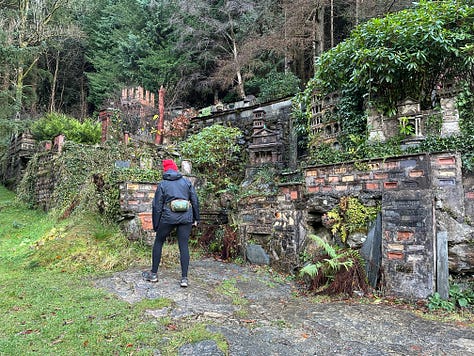

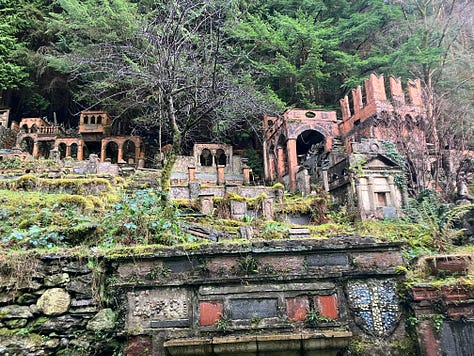
We kept climbing to a series of waterfalls and abandoned slate buildings. The path became overgrown and the sun was setting soon, so we made our way back, past slate fences and horses and sheep.
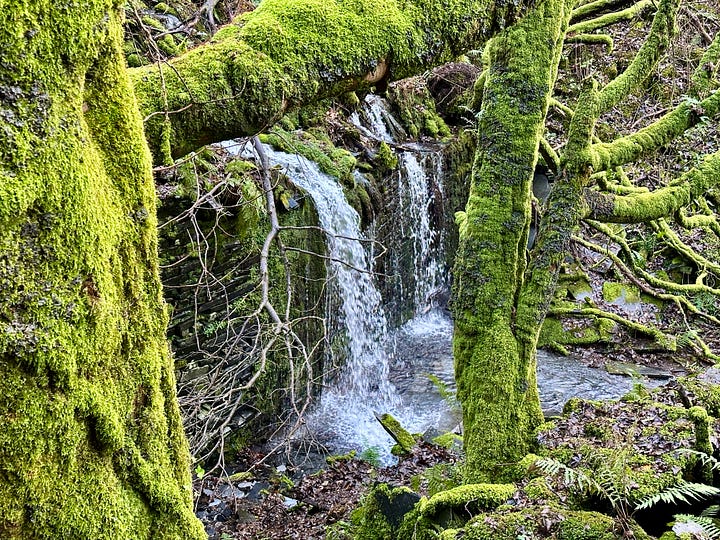
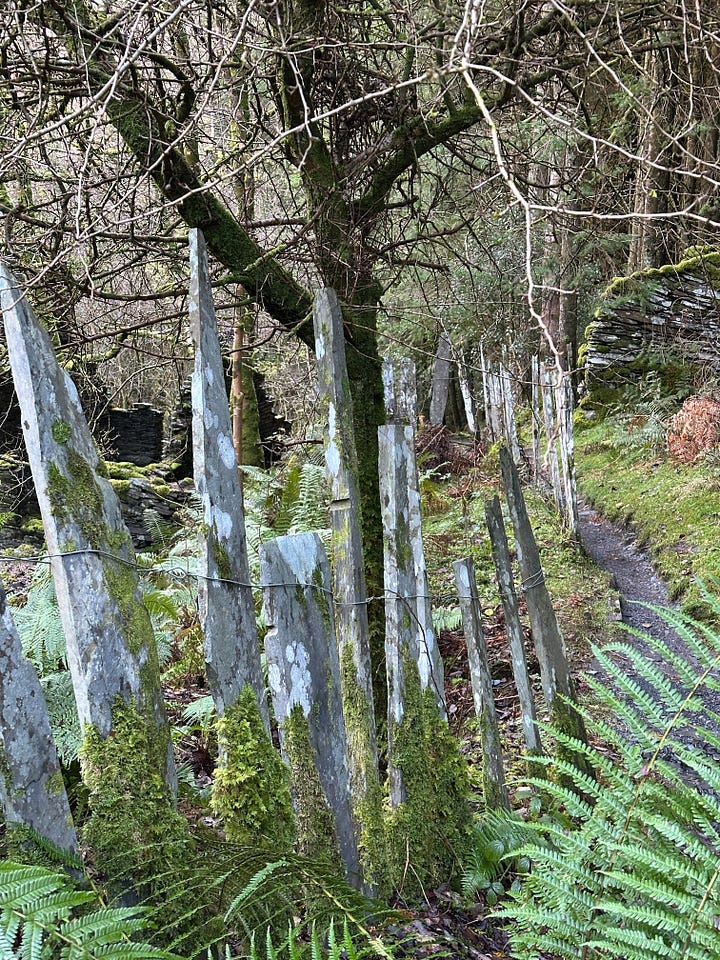
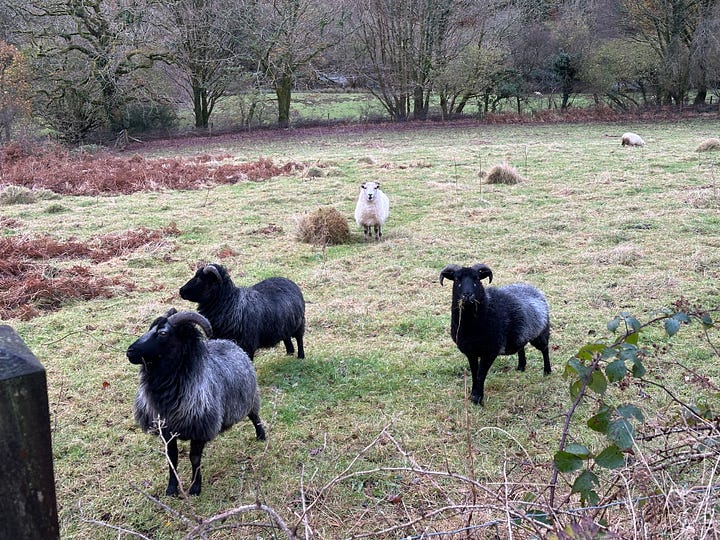
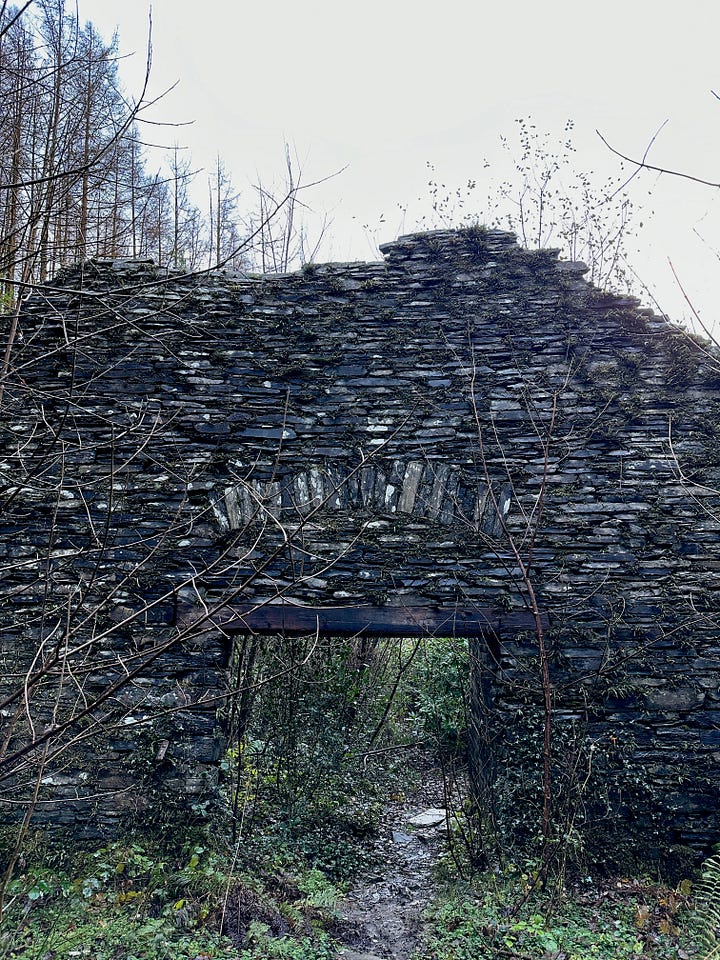
It was a wonderful hike, but the name of it still had me puzzled. Where was this “Little Italy”??
Andy discovered that Little Italy was the strange collection of miniature buildings we passed. A man (who seemed a bit of a local eccentric) spent years making it. (I highly recommend reading this article about it — it’s an extremely entertaining read). He built Venetian canals, a replica of the Duomo, an entire model English village. Over 200 structures built by hand, with materials that he hauled up the hill himself. The team now working to conserve it doesn’t think they’ve found everything yet - it had become overgrown and there are more treasures to discover as they whack away the plants.
The man who built Little Italy, Mark Bourne, and his wife Muriel who helped him seemed to have done it just for the sheer enjoyment of it. And the people who are restoring it don’t seem particularly intent on turning it into a money-making tourist spot. They seem to be motivated mostly by respect for its craftsmanship and by a belief in the importance of saving beautiful things.
The next day, we went under Corris, on a private tour of a slate mine (private only because demand for a mine tour in the middle of the week in November is not super high).
The mine operated basically without change for over 100 years, closing in 1970. And without change, I mean that they used hand tools, candles, and child labor for its entire operation. Miners swung from chains in the ceilings to hand-chisel giant slabs of slate, while children as young as eight pushed carts of slate out of the mine. Workers were forced to rent their equipment from the mine owners, were only paid for “quality” slate (which meant they weren’t paid for 90% of what they mined), and were fined for speaking Welsh.
Despite the terrible conditions, slate mining was a comparatively good job in the area. It paid better than other jobs. Workers could be fairly independent (each worker decided where and how much he wanted to mine). And it was safer than other jobs, like working in the mills.
We only had headlamps to illuminate the tour, but the mine was quite beautiful. Slate ripples in wonderful patterns and some was run through with iron or crystals. The caverns that the miners chiseled out of the slate were astonishing. Our tour guide told us one chamber further down the mountain was the size of Wembley Stadium. Chiseled by hand - no power tools.
We entered the mine by climbing part way up the mountain and going under a waterfall. Unlike coal mining, slate mining doesn’t go very deep underground. The geography was disorienting - we were obviously underground, inside a mountain, but even the deepest level of the mine is above the town center of Corris. We seemed to be simultaneously over and under the town.
The next day, I was intending to explore Corris further with a group of Ramblers. I learned the hard way that some Ramblers groups are actually punctual — we arrived nine minutes after the listed start time and the Ramblers were long gone, leaving a parking lot full of mud-spattered station wagons in their wake.
So we kept driving through the valley and stopped at Dolgellau, another charming town full of stone buildings and slate sidewalks. I left Andy there and headed out for a walk. After a bit of harrowing road walking, I made it to a cycling path next to the River Mawddach. It was different walking than what I’d been doing lately. Flat. Gravel path. Scrubby forest and marshland. Very few sheep.
As I turned around a bend, I saw a beautiful wooden bridge that looked quite familiar. We had next to it a few weeks ago, on our drive down from Anglesey. At dusk, we had crossed the bridge, paying 30 pence each to a man at a cozy tollbooth. In the morning, we’d woken up to the mournful and astonishingly loud moos of a cow across the river. Both the cow and the toll man were gone, and I pressed on.
Gradually, the river winded through a springy, fluffy, moss-like plant. It seemed like a place where fairies would live. The river widened, and the moss gave way to giant sand bars. The water was amazingly still, reflecting the hills perfectly. The reflections and the sand bars created odd optical illusions; it looked as though the sandbars led straight down into underwater mountains. The river changed again, turning marshy with tall reeds and grasses. Then the path diverted and I was traipsing through scrubby forest again, until I rounded a hill and saw miles of mud flats spread out before me.
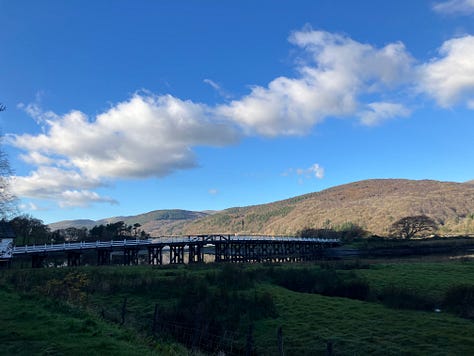
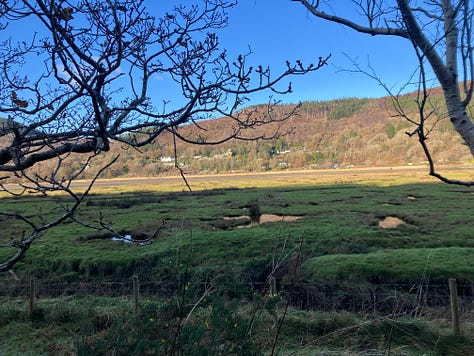

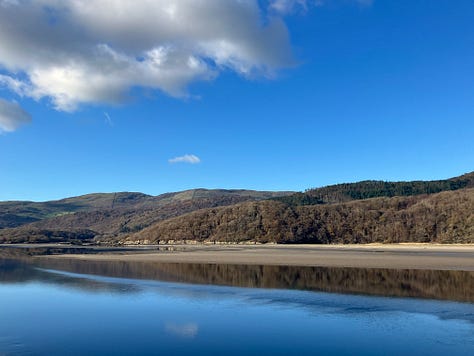
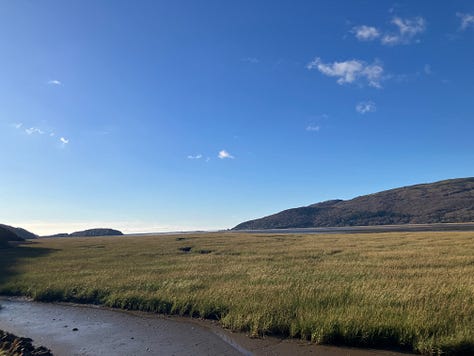
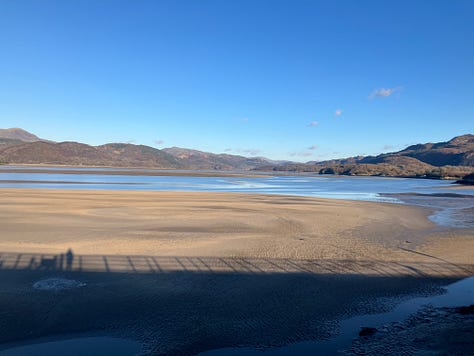
The path continued along a rail line and eventually onto a very long bridge for both trains and walkers and cyclists. The bridge spanned the river and some of the mudflats, which looked like quick sand (the number one fear of millennials who read choose your own adventure books as children). After nine miles of walking, I was finally in Barmouth, where Andy was waiting for me and we drove home



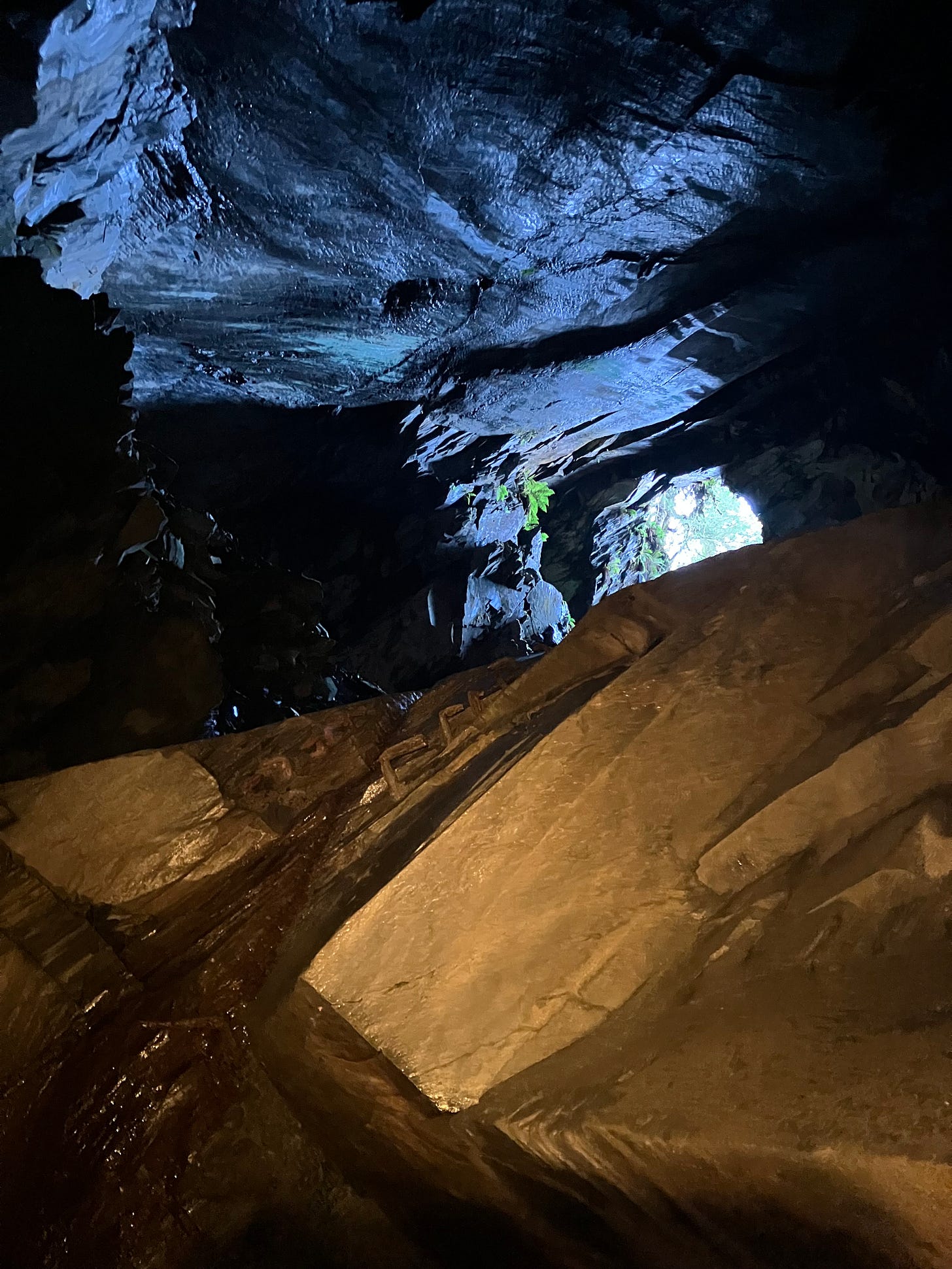
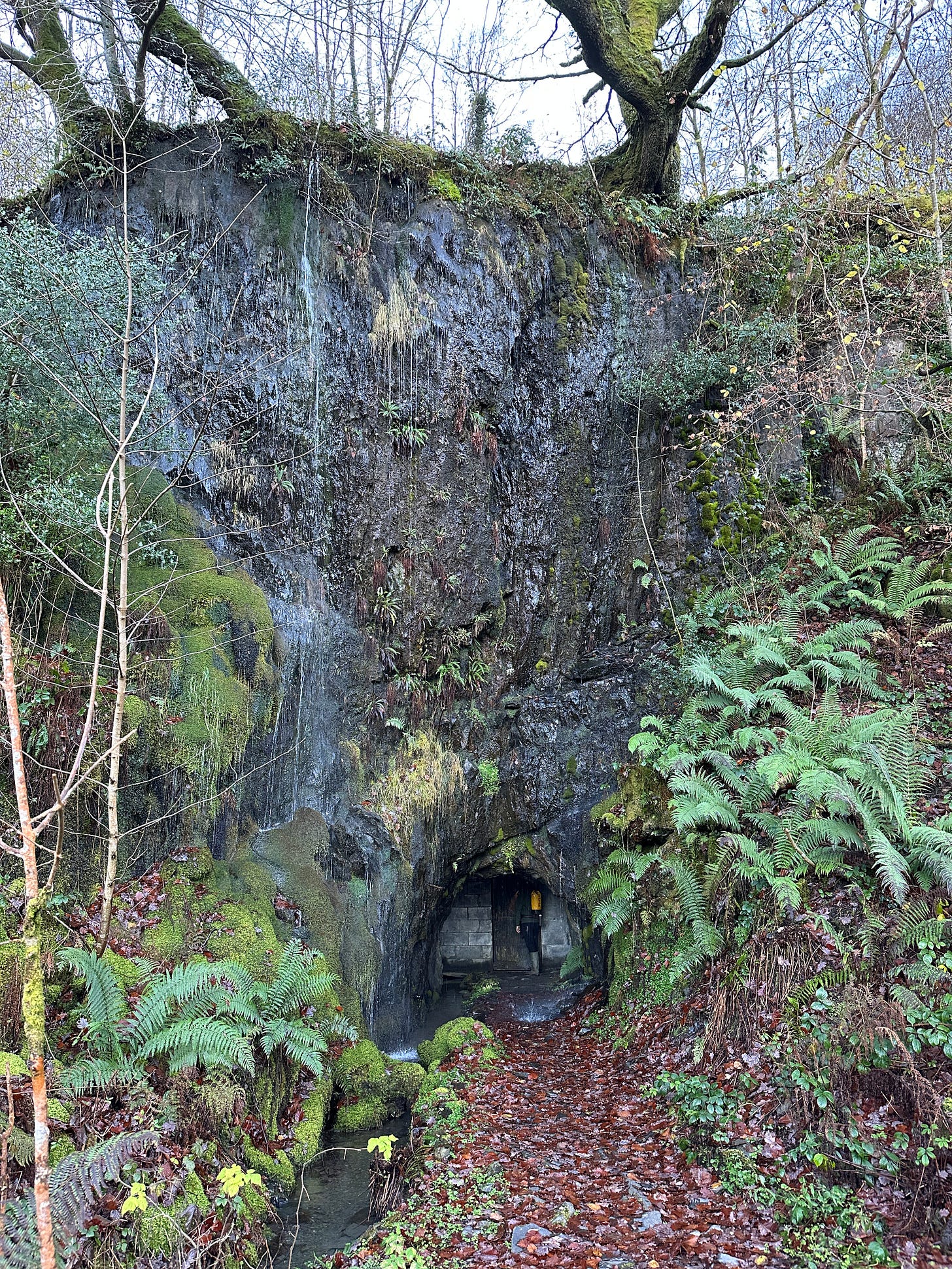
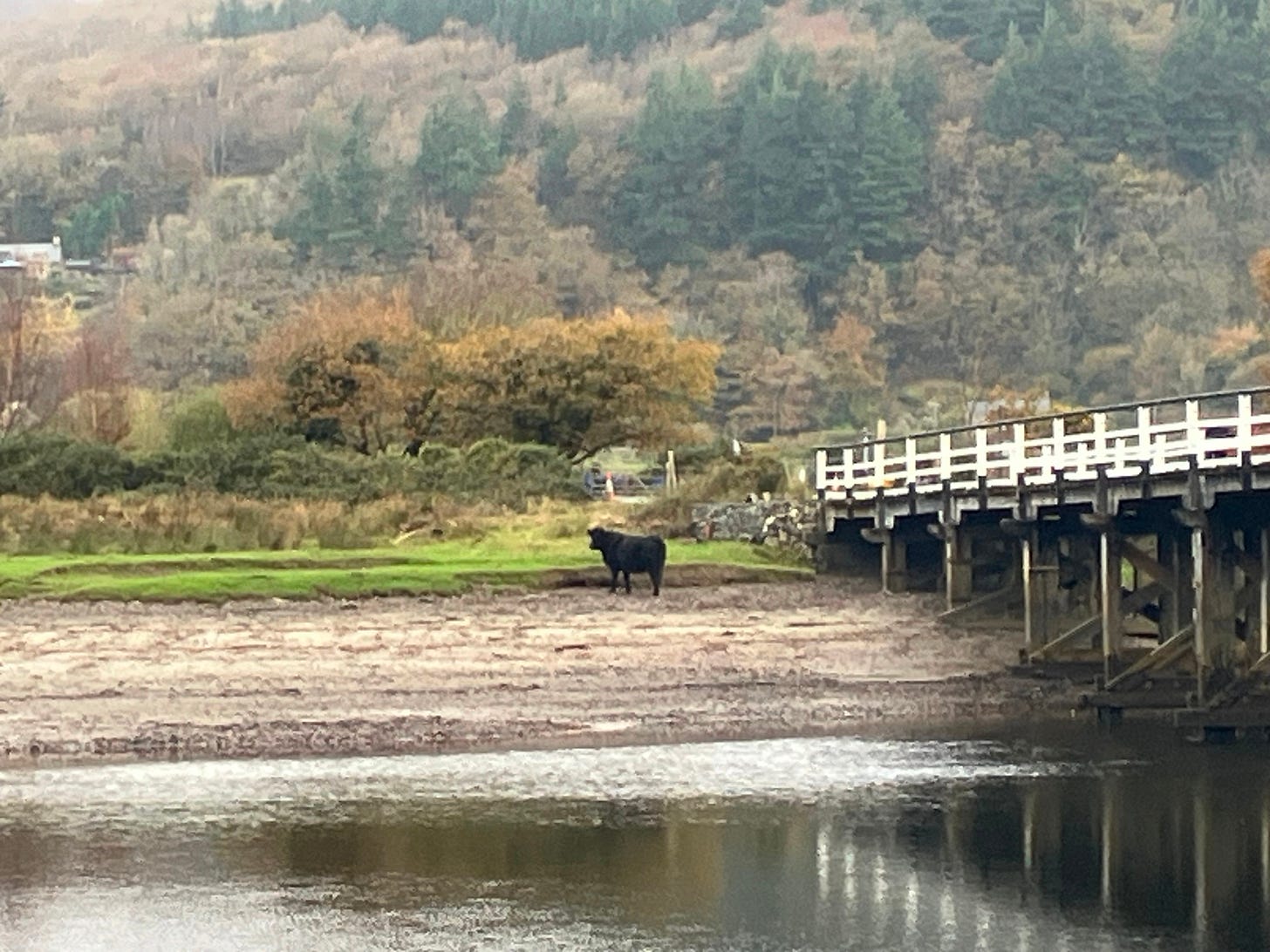
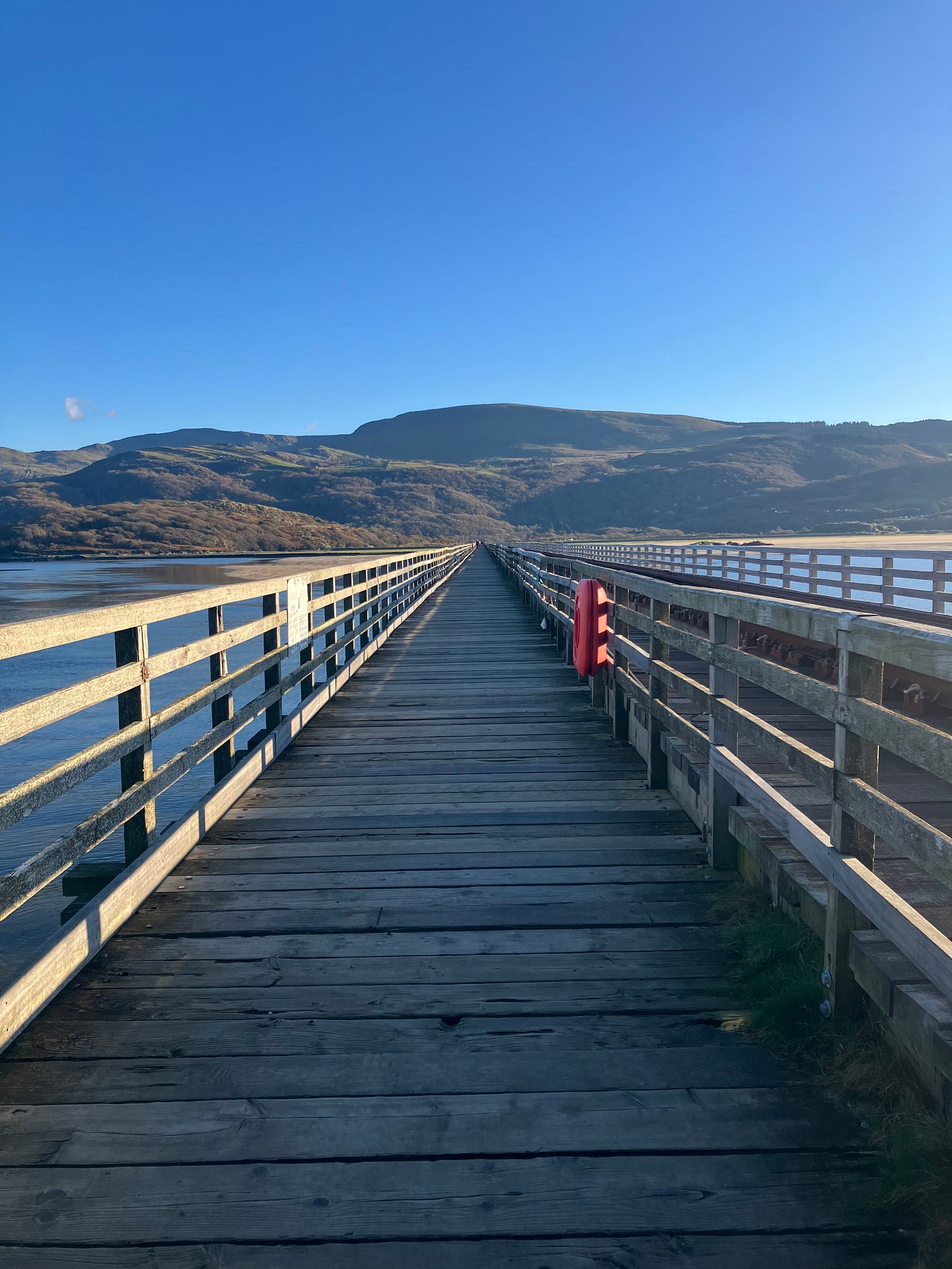
What an extraordinary Thanksgiving Day gift!!! Thanks so much for sharing this particular day, which I'm sure will stay with you for the rest of your life. I don't know that I'll ever get to see "Little Italy" in person, but I feel blessed to have even learned about it and seen a few pictures. Magical!
Just wow. That was really cool.